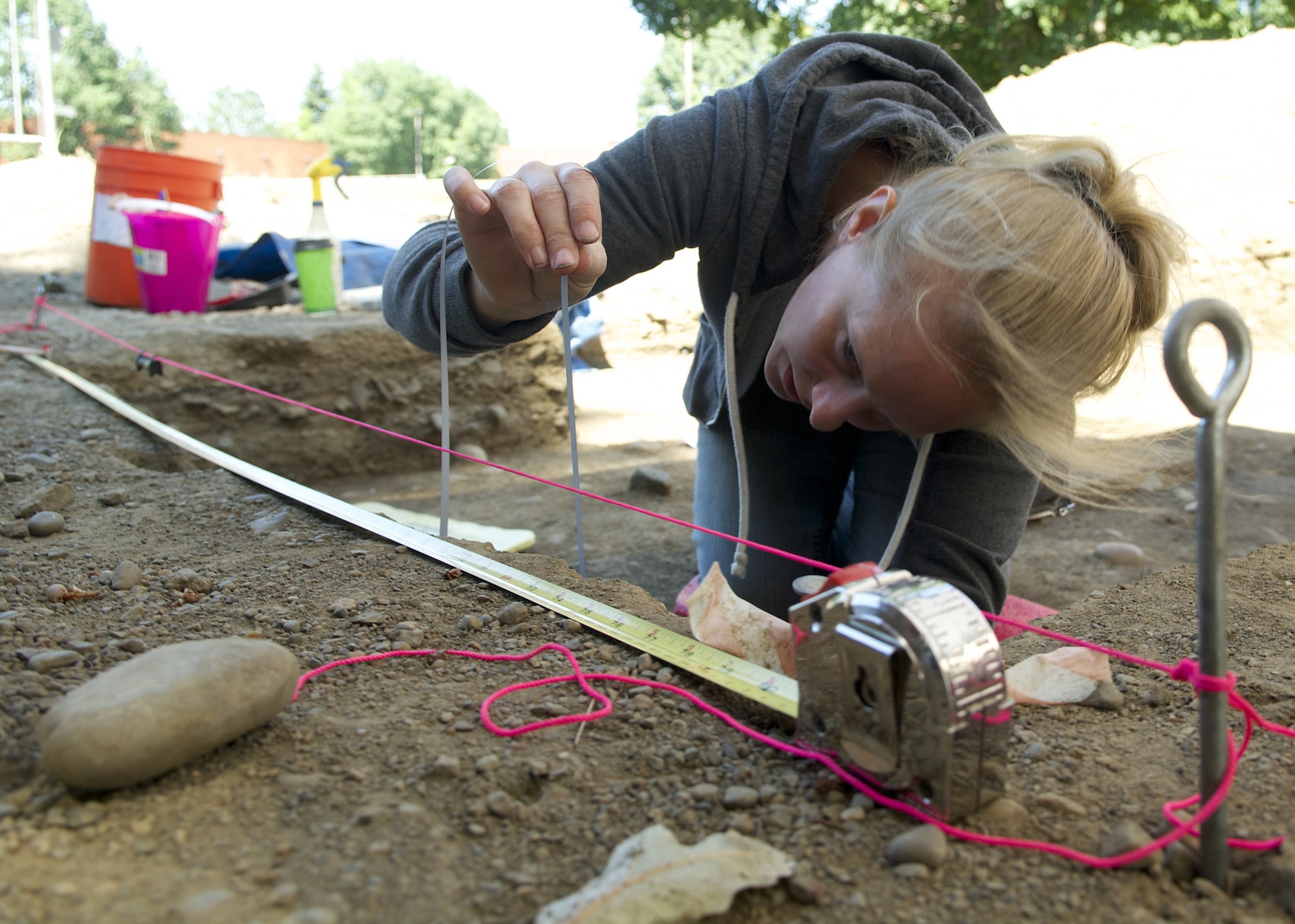Army surgeon Levi Holden was the region’s first weatherman when he arrived at Camp Vancouver in 1849. According to National Park Service volunteer Jason Ainslie, the Army’s medical department also kept track of weather records.
That compact patch of neatly excavated landscape is another one of Fort Vancouver’s historic crossroads, but on a more intimate scale.
It’s where Little Proulx moved out and Dr. Holden moved in.
Much of the Fort Vancouver story reflects chapters of American history, featuring familiar names whose comings and goings were part of national transitions.
This summer, college students have been exploring one small area where that transition happened on both the institutional and individual levels.
As part of the annual field school at Fort Vancouver National Historic Site, they’ve been working at the Little Proulx dig. Proulx (pronounced “Prew”) lived here in the 1840s and was employed by the Hudson’s Bay Company.
The students have been carefully excavating the home site at the former workers village, west of the reconstructed fort stockade. The soil under the house’s earthen floor has yielded a lot of artifacts left behind by Proulx and his wife, a member of a Chinook tribe.
It’s an exciting process, said Justine Hanrahan, heading into her sophomore year at Washington State University Vancouver. She is a graduate of Vancouver School of Arts and Academics, where her focus was literary arts. And she sees something of that in archaeology.
“It’s discovering people’s stories, even when they can’t write,” Hanrahan said.
Not all of their findings represent the life of the French-Canadian fur trader; some were left by Capt. Levi Holden — the first U.S. Army surgeon in the Oregon Territory.
The Army arrived in 1849 in two groups. A force of mounted riflemen made the overland trek; the other contingent, including Holden, sailed around South America aboard the USS Massachusetts and landed at Astoria.
The post they established was originally called Camp Vancouver, then Columbia Barracks.
Holden was assigned two houses, according to Jason Ainslie, a National Park Service volunteer who wrote about the surgeon’s posting here. One was the former home of Little Proulx.
“The Army rented it from the Hudson’s Bay Company,” said Doug Wilson, National Park Service archaeologist, at the site last week. “Holden either lived here or used it as his surgery. The Army rented it for a year or two, before a proper site could be built in the Barracks.”
The archaeology students have found enough artifacts to document the change in tenants, Wilson said.
“We found a large key,” Wilson said. It would have been part of Holden’s occupancy, he said. “The Proulx family would not have had a lock” on the door.
They’ve also found two distinct types of nails where the house once stood. Some were typically British hand-forged nails; others were manufactured nails that would have been used by American soldiers doing repairs.
A fragment of glass was another clue. After comparing it with glass artifacts in the collection, volunteers identified it as part of an ink bottle. Most Hudson’s Bay Company employees who lived in the workers village were illiterate, so the ink bottle likely belonged to Holden.
Holden wasn’t here long, Ainslie wrote in a Northwest Cultural Resources Institute publication. He left in 1850 for Fort Leavenworth in Kansas and went on to serve with distinction in the Civil War.
The building Proulx and Holden had occupied didn’t last long following the surgeon’s departure, burning down in the 1850s or ’60s.
The work done at the site over the last three summers also will be vanishing soon, Wilson said. With the field school over, volunteers from the Oregon Archaeological Society will take over the dig for the rest of the summer. Then the Proulx site will be covered.
“We will leave it intact for future generations,” Wilson said. “There are plenty of things to do” in other parts of the historic site.




